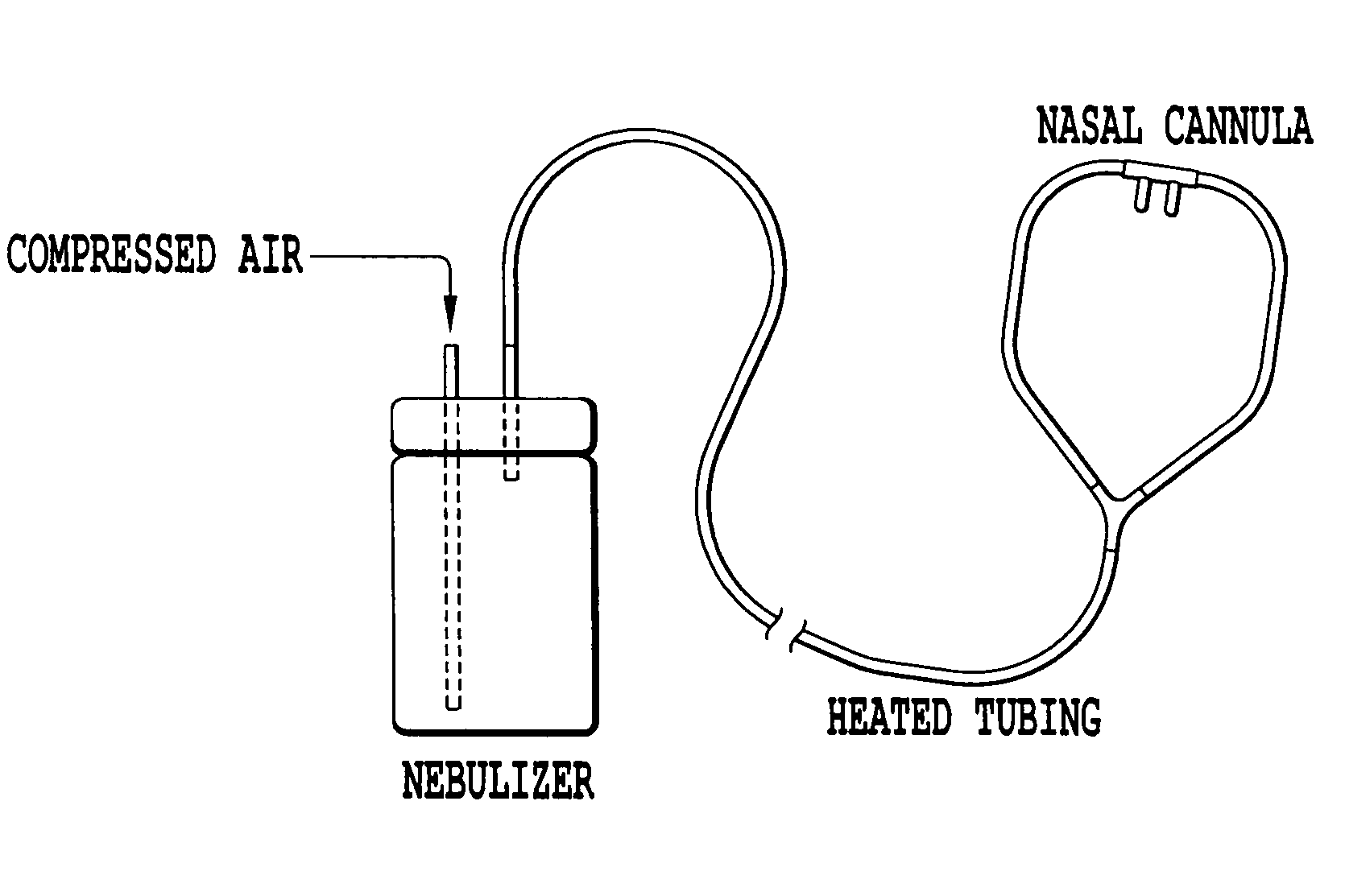Inhaled hypertonic saline delivered by a heated nasal cannula
a technology of hypertonic saline and cannula, which is applied in the direction of respirators, biocide, drug compositions, etc., can solve the problems of inability to clear mucus from airway surfaces, inability to initiate problems, and failure to clear mucus, so as to improve the dosing of an osmolyte
- Summary
- Abstract
- Description
- Claims
- Application Information
AI Technical Summary
Benefits of technology
Problems solved by technology
Method used
Image
Examples
examples
[0037]The nebulizer system shown in FIG. 1 was run for 80 minutes with 7% hypertonic saline. The build-up of fluid within the oxygen tubing was observed with and without heating the oxygen tubing in a water bath. For this system, the tubing became occluded with water droplets within 23 minutes of continuous nebulizer operation. Externally heating the tubing to 60° C. allow the nebulizer system to run for the full 80 minutes without occlusion from water droplets.
TABLE 1The effect of heating on fluid condensation within the oxygen tubing.Nebulizer / External TubingTime toCompressorTubingTemperatureCondensationPari-LC Star withOxygen TubingAmbient23 minProNeb Compressorwith Adultnasal cannulaPari-LC Star withOxygen Tubing60° C.No significantProNeb Compressorwith Adultcondensationnasal cannula
PUM
 Login to View More
Login to View More Abstract
Description
Claims
Application Information
 Login to View More
Login to View More - R&D
- Intellectual Property
- Life Sciences
- Materials
- Tech Scout
- Unparalleled Data Quality
- Higher Quality Content
- 60% Fewer Hallucinations
Browse by: Latest US Patents, China's latest patents, Technical Efficacy Thesaurus, Application Domain, Technology Topic, Popular Technical Reports.
© 2025 PatSnap. All rights reserved.Legal|Privacy policy|Modern Slavery Act Transparency Statement|Sitemap|About US| Contact US: help@patsnap.com


